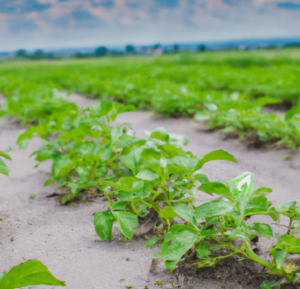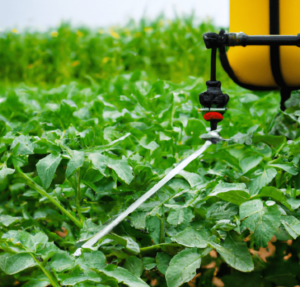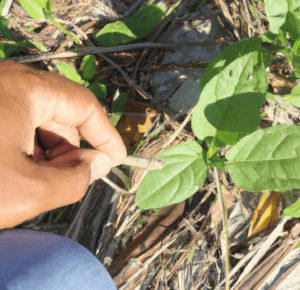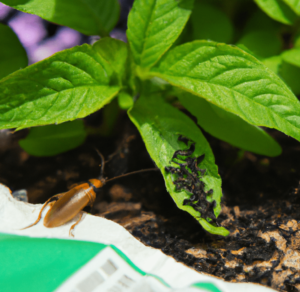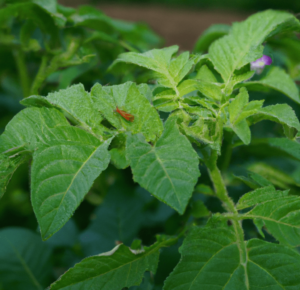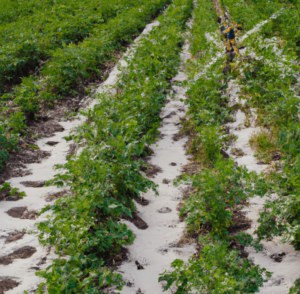Many people enjoy gardening as a hobby, but controlling pests and illnesses may be difficult. Pesticides and other traditional pest management techniques can affect the environment, wildlife, and even people. IPM, or integrated pest management, can help in this situation. IPM is a comprehensive strategy of gardening that emphasizes the use of non-toxic pest management techniques while fostering the well-being of the garden environment. In this article, we’ll dive into everything you need to know about the benefits of using integrated pest management in your garden.
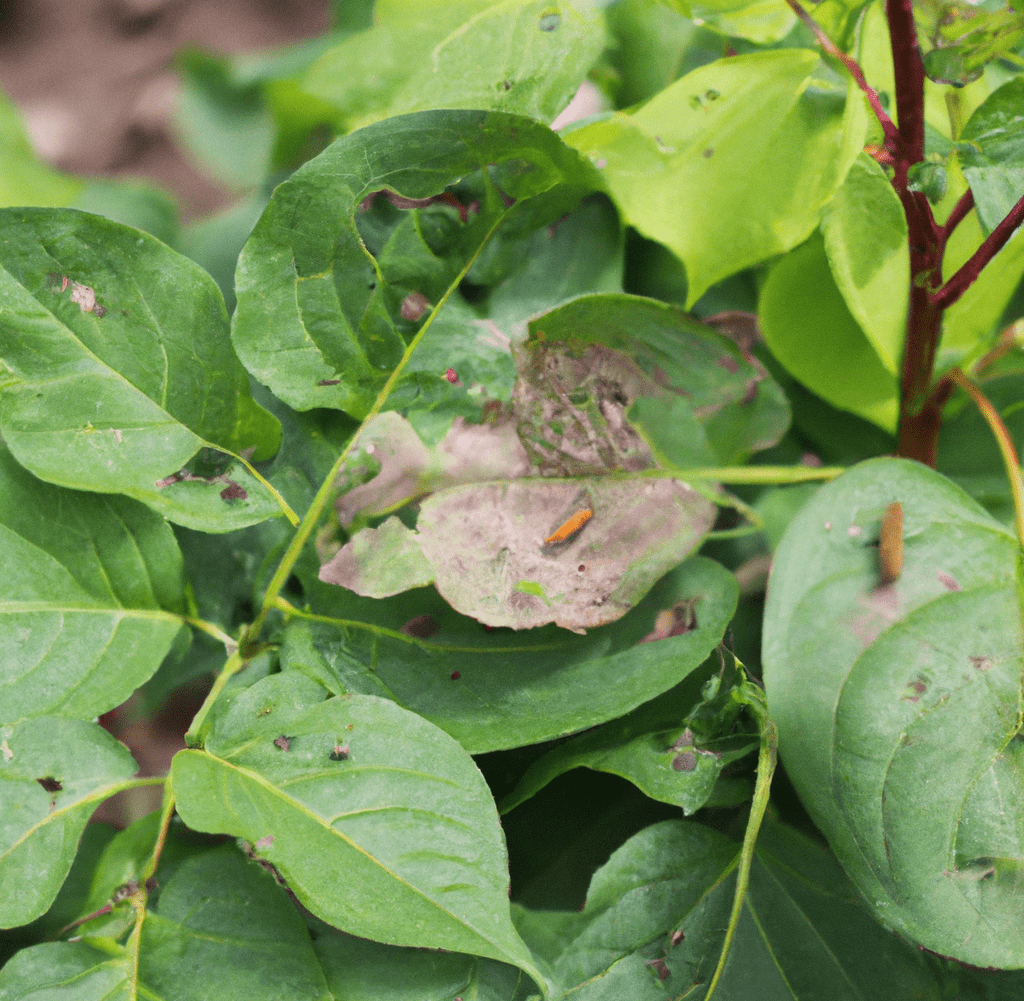
What is integrated pest management (IPM)?
A thorough assessment of pest issues is the first step in the multi-phase process known as integrated pest management (IPM), which then employs a variety of management strategies to control pests. IPM’s guiding principles include keeping an eye out for pests, utilizing biological, cultural, and physical controls whenever possible, and only turning to chemical controls as a last resort. IPM aims to use fewer pesticides, encourage healthy soil and plants, and lessen the damage that pests do to the environment.
IPM has a brief history that begins in the 1960s, a decade in which pesticide use peaked and the drawbacks of such use became clear. When it was discovered that using pesticides was bad for the environment and wildlife, researchers started looking for more natural ways to get rid of pests. IPM has gained popularity as a method of managing pests in agricultural settings as a result of the dangers of using chemical fertilizers and pesticides on edible plants and gardens in general. Now, let’s learn about the benefits of using integrated pest management in your garden.
The Benefits of Using IPM in Gardening
The benefits of using IPM in gardening have a variety of advantages, including advantages for soil health, human health, agricultural sustainability, and water conservation. This is what sets the method apart from the environmental impacts of chemical pesticides and herbicides:
- Water: IPM techniques can aid in water conservation by minimizing chemical pesticide runoff. This runoff poses a threat to aquatic habitats and water sources. IPM can assist to preserve water resources and safeguard water quality by lowering the usage of chemicals in the garden.
- Agriculture Sustainability: By lowering the demand for chemical pesticides, IPM measures can support agriculture sustainability. As a result, agriculture has a smaller negative impact on the environment and crops are healthier and more productive over the long run. IPM can also assist with pest control in a more sustainable and natural way, decreasing the need for hazardous chemicals and enhancing the well-being of the soil and adjacent ecosystems.
- Soil Health: IPM techniques can improve soil health by minimizing the use of hazardous chemicals that can degrade soil fertility and structure. IPM can assist in maintaining a healthy soil environment, which is necessary for good plant growth and productivity, by employing natural and sustainable approaches to control pests.
- Human Health: By limiting exposure to dangerous pesticides, IPM techniques can also improve human health. Pesticides can have harmful consequences on human health, such as cancer, skin irritation, and respiratory issues. IPM can contribute to the protection of human health and the promotion of a healthy living environment by decreasing the use of pesticides in the garden.
The Benefits of Using IPM in Reducing Chemical Pesticides and Herbicides Use
For thousands of years, agriculture has been a vital component of human civilization. We can survive and thrive because it has given us food and other resources. But as the size of our population has increased, so has the demand for food production methods that are more productive and efficient. As a result, chemical herbicides and fertilizers are now widely used in agriculture.
Chemicals known as pesticides are employed to eradicate or suppress pests that could endanger crops. While they are excellent at removing pests, they can also have negative environmental effects, such as soil and water contamination. They may also endanger wildlife and other helpful insects, which could disrupt the ecology. In addition, if taken in large doses, pesticides can be hazardous to both people and other animals.
On the other hand, IPM is an approach to gardening and agriculture that places a focus on using natural pest control techniques while encouraging strong plant growth. IPM practices include encouraging healthy soil and plant growth, using chemical pesticides only when necessary, and using natural predators to control pests. Compared to conventional agricultural practices, the benefits of using integrated pest management in your garden include being more ecologically friendly and environmentally sustainable. T
The Benefits of Using IPM in Maintaining the Biodiversity and Health of the Ecosystem
Here are the benefits of using integrated pest management in your garden in preserving ecosystem health and biodiversity:
- Benefits for Agriculture: IPM techniques can increase agricultural production and lessen the demand for dangerous pesticides. IPM can improve soil fertility and boost crop resilience by encouraging good water and soil management.
- Reduces Harmful Effects: IPM lessens the harmful effects of pesticides on the environment and aids in the preservation of the natural ecosystem. The strategy also aids in the survival of helpful fauna and insects, creating a more diverse and healthy ecosystem.
- Food Benefits: By using less toxic pesticides, IPM techniques can increase the quality and safety of food. The strategy also contributes to the long-term sustainability of food production, ensuring a steady supply of healthy food for coming generations.
- Protects Water Resources: IPM can aid in maintaining the quality and accessibility of water resources. IPM contributes to the protection of water bodies from contamination and the promotion of healthy aquatic ecosystems by minimizing the use of toxic pesticides.
- Soil Fertility: IPM methods can aid in preserving the soil’s fertility and health, which is crucial for sustainable agricultural and food production. The method also aids in stopping erosion, soil deterioration, and other types of environmental harm.
The Benefits of Using IPM in Reducing Costs and Increasing Yields
The benefits of using integrated pest management in your garden include lower costs and higher yields:
- Less Water Used: IPM approaches frequently call for using less water in farming, which can result in lower costs and less strain on water resources.
- Reduced Pesticide Use: IPM can assist in reducing the overall amount of pesticides required to manage pests by combining non-chemical and chemical management strategies. This lowers costs while also lowering the possibility of pesticide residues in food and soil.
- Increased Food Yields: Farmers can frequently increase yields and enhance crop quality by utilizing IPM techniques that support healthy soil and plants. Farmers profit more as a result, and there is more food available for customers.
- Health Risks Reduced: IPM lowers the likelihood that farmers, farm workers, and communities may be exposed to pesticides and other dangerous substances.
The Key Principles of IPM
While the benefits of using integrated pest management in your garden are plenty, you need to truly understand the method:
- The employment of non-chemical ways to manage pests, such as biological management, habitat modification, and cultural practices, is emphasized by IPM. In order to reduce the risk of harm to both human health and the environment, pesticides are only applied as a last resort and in the smallest quantities required to effectively manage pests.
- IPM understands the significance of managing water in a way that promotes crop health and lowers pest populations. Water is a vital resource for agriculture. This includes actions like choosing crops that can withstand drought, controlling irrigation, and applying mulch to retain soil moisture.
- IPM entails ongoing observation and assessment of pest populations and the efficiency of pest control measures. This makes it possible to control pest populations and lessen the negative effects of pest management techniques on the environment and public health.
- IPM aims to lessen the effects of pest control activities on the ecosystem by recognizing the value of preserving and protecting the environment. This entails cutting back on the use of potentially harmful pesticides, protecting natural areas, and using sustainable agricultural methods that promote the long-term well-being of the ecosystem.
- IPM promotes environmental preservation, human health protection, and the long-term productivity and sustainability of agricultural systems by adhering to these fundamental principles.
The Different Components of IPM Such As Monitoring, Identification, Action Threshold and Action Selection
Monitoring, identification, action threshold, and action selection are the four key IPM components. Together, these elements support farmers in making sustainable and efficient decisions concerning pest management. Regularly watching crops and noting the presence of pests and other problems that might impair plant health is the practice of monitoring. This data is utilized to pinpoint issue areas and monitor ongoing developments.
IPM relies on monitoring to identify the action threshold or the point at which pest numbers have risen to the degree where the action is necessary. The process of appropriately identifying the pest species and its life cycle is known as identification. The best management techniques can be determined with the help of this information.
Pests in their juvenile stages, for instance, might be more amenable to some treatments than pests in their mature stages. An intervention is necessary to control pest populations at the “action threshold” in order to protect crops. This limit is established by monitoring and is subject to change based on the crop, the type of pest, and other elements. IPM minimizes the need for needless treatments by only taking action when pest numbers surpass the action threshold. Depending on the type of pest, where it is in its life cycle, and the action threshold, the best pest management technique must be selected.
Physical control methods, biological control methods, and chemical control methods are only a few of the strategies that can be used in IPM. The objective is to select the least hazardous option that is functional for the pest in question when chemical control approaches are required. It’s crucial to remember that water management is an essential aspect of IPM. When creating an IPM plan, cadmium toxicity in water sources, for instance, must be taken into consideration as it may affect crop health and pest populations.
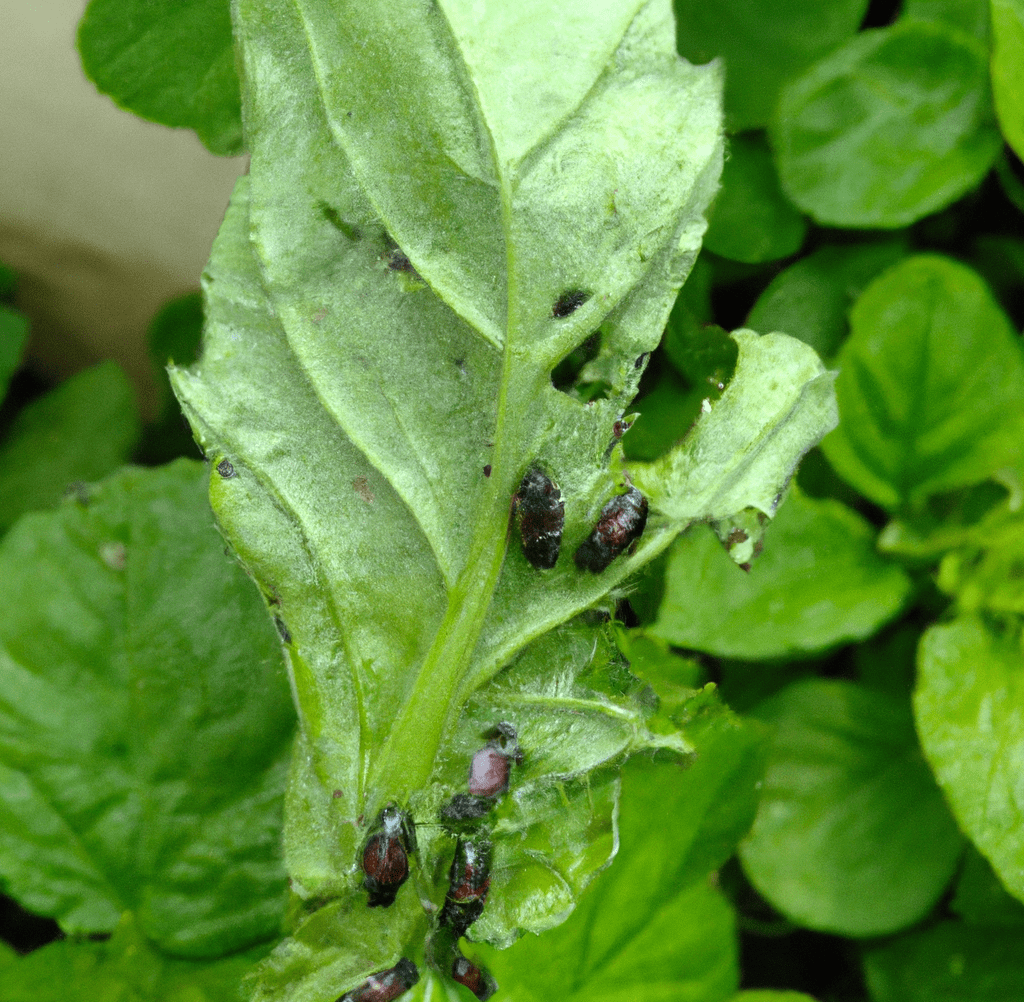
How These Components Work Together to Create an Effective Pest Management System
Systems for pest management are created to effectively reduce the pest population in agricultural settings. These systems rely on a mix of many elements that cooperate to offer an all-inclusive solution. In agricultural settings, food, pesticides, and chemicals all play significant roles in the management of pests. Since food is a source of nutrition for pests, it is a crucial part of pest management strategies. The goal of a well-planned agricultural environment should be to limit the amount of food available to pests and make it more difficult for them to locate and consume it.
Crop rotation, the use of resistant crops, and appropriate food storage can all help with this. Chemicals and pesticides are crucial parts of pest management systems. They are employed to reduce the number of pests by either eliminating or discouraging them. Chemicals can be used to interrupt the life cycle of pests and make it more difficult for them to survive, whilst pesticides can be sprayed directly on crops or the surrounding environment.
It’s crucial to think about the environment’s effect when choosing pesticides and chemicals, as well as to make sure they’re suitable for human consumption. In addition, the agricultural environment itself is important to pest management strategies. An unpleasant environment for pests to exist and thrive in is the goal of effective pest management strategies. Physical barriers, the introduction of natural predators, and the preservation of a generally healthy and balanced ecosystem can all help achieve this.
How to Implement IPM in Your Garden
Now that you know all about the benefits of using integrated pest management in your garden, here’s how to implement it:
- Cultural Control: In this approach to IPM, insect populations are reduced by utilizing cultural techniques like crop rotation, appropriate irrigation, and soil management. For instance, rotating crops can lessen the demand for pesticides by preventing the accumulation of pests in the soil.
- Biological Control: In this type of IPM, pests are managed by utilizing diseases, parasites, and natural predators. For instance, ladybugs can assist manage aphid infestations in your garden.
- Chemical Control: In this IPM strategy, pests are managed by the use of pesticides and herbicides. Chemical control needs to be a last resort, only utilized when all other options have failed.
- Choosing the Appropriate Application Rate: Finding the right application rate for the various plants in your garden is crucial. Depending on the type of plant, its size, and the extent of the pest issue, this can change. When using pesticides and herbicides, you should always adhere to the manufacturer’s recommendations and instructions.
- Safety Measures: It’s crucial to follow safety measures when handling and using pesticides and herbicides in order to safeguard the environment, other people, and yourself. This includes donning safety gear, avoiding skin and eye contact, and according to label directions. You should also take precautions to reduce runoff and leaching into groundwater and be aware of how pesticides may influence the water supply.
Bottom Line: The Benefits of Using Integrated Pest Management in Your Garden
Agriculture is vital to the production of food and the preservation of a livable environment for people. Chemical pesticides and fertilizers are widely used in agriculture, yet they have several detrimental effects on the environment, food, and public health. This is why it’s critical to take into account alternatives in gardening approaches, such as Integrated Pest Management (IPM).
Some of the benefits of using integrated pest management in your garden include the fact that it supports a healthy environment, preserves soil fertility, and lessens water pollution. IPM also aids in the production of safer, healthier food that is devoid of harmful chemicals and residues.
To avoid the negative effects of chemical fertilizers and pesticides, gardeners should take into consideration implementing IPM in their gardening operations. We can preserve a healthy ecosystem and make sure that our food is wholesome and safe by implementing sustainable methods. Keep in mind that we must always put the health of our environment and people first in all of our operations.
The Benefits of Using Integrated Pest Management in Your Garden FAQs
What is IPM?
IPM is an all-encompassing gardening strategy that places an emphasis on using non-toxic pest management methods while promoting the health of the garden ecosystem. IPM entails a detailed evaluation of pest issues, which is followed by the application of a number of management measures to manage pests. IPM’s guiding principles include for keeping a look out for pests, relying as much as possible on biological, cultural, and physical controls, and only using chemical treatments as a last resort.
What is the IPM’s history?
A brief history of IPM can be found in the 1960s, a decade in which pesticide use peaked and its negative effects became evident. After it was established that applying pesticides was hazardous for the environment and wildlife, researchers began looking for more natural ways to get rid of pests. IPM has become more well-liked as a technique for controlling pests in agricultural settings as a result of the hazards associated with using chemical fertilizers and pesticides on edible plants and gardens in general.
What advantages does IPM have in gardening?
IPM has advantages for soil health, human health, agricultural sustainability, and water conservation in gardening. This distinguishes the procedure from the effects of chemical pesticides and herbicides on the ecosystem. IPM practices can promote human health, assist sustainable agriculture, and conserve water by reducing the use of chemicals in the garden.
How does IPM differ from traditional farming methods?
IPM in your garden has several advantages over traditional agricultural methods, including being more eco-friendly and environmentally sustainable. IPM emphasizes the use of natural pest control methods while promoting robust plant growth, sparingly applying chemical pesticides, and using natural predators to manage insect populations.
What advantages does IPM have in preserving ecosystem health and biodiversity?
Increasing agricultural output and lowering the need for harmful pesticides, reducing negative environmental effects and preserving the natural ecosystem, improving food quality and safety, preserving the quality and accessibility of water resources, and preserving the fertility and health of the soil are all advantages of using IPM to maintain biodiversity and the ecosystem’s health.
What are the advantages of employing IPM for cost-cutting?
Reducing the need for pricey chemical pesticides and herbicides, the cost of manpower for pest control, and the cost of crop loss are some of the advantages of employing IPM in cost reduction.


